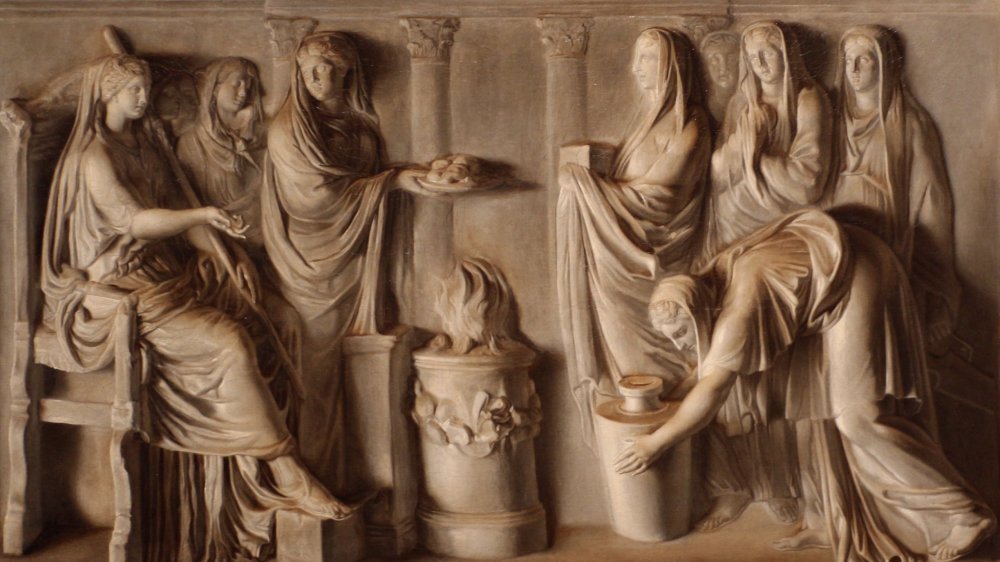
Hearth of Haemonia
NEW Medea Source Guide
NEW Medea Source Guide
Magic of the Past for the Present
Imagine a world where everyone knew a witch. Where mainstream medicine relied on the same herbal knowledge as the village cunning folk, and professional diviners were employed by the state. A world where everything from love, to lawsuits, to sports was vulnerable to attacks by supernatural forces summoned by neighbors and rivals. A world where magic was so deeply embedded in the collective consciousness that its very existence was rarely questioned.
This is the world of ancient Rome, and to a lesser extent ancient Greece, whose laws and literature reflect a near-universal belief in - and fear of - magic.
I created Hearth of Haemonia as a resource for both history buffs and modern practitioners for what magic in the ancient Greco-Roman world looked like, and how the marks of its influence are still visible in our world today.
Two women consult a witch. Theater scene; all three figures wear masks.
Mosaic, ca. 1st c. CE. Villa del Cicerone, Pompeii, Italy. Museo Archeologico Nazionale (Napoli).
The witch Medea drives the serpent-pulled chariot of her grandfather, Helios the Sun God.
Red-figure calyx-krater, ca. 400 BCE. Cleveland Museum of Art.
The hearth is the center, the focal point, the nucleus of domestic life and individual spirituality. The Romans placed the hearth in the middle of their city and viewed it with more reverence than almost anything else.
The Vestal Virgins tend to the hearth fire of Vesta.
Jean-Baptiste Siméon Chardin (attr.), Le Vergini Vestali, 1760-1770.



